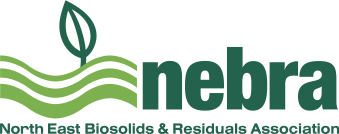11/24/21
Quebec Leads the Way on SSI Ash Beneficial Reuse for Phosphorus
NEBRA Member Marc Hébert, a trainer and consultant from Quebec and former biosolids coordinator for the province, is an advocate for beneficial reuse of biosolids. He is probably one of the most knowledgeable people when it comes to the phosphorus content of sewage sludge incinerator (SSI) ash and its value as a soil amendment. His presentation at the annual Northeast Residuals Conference this year was titled “Montreal Sludge Incineration — Recovery of Ash as Phosphate Fertilizer, Liming Product and for the Reduction of Greenhouse Gases” and it built on his research and a report for the Jean-R. Marcotte water resource recovery facility (WRRF) in Montreal (see https://www.nebiosolids.org/ssi-ash-in-montreal). Marc’s background is in agricultural sciences and he has seen the benefits of reusing resources found in wastewater.
Marc Hebert first became involved with SSI ash in 2008 as part of the Canadian Council of Ministers of the Environment (CCME)’s Biosolids task group. Marc credits the work done by Sylvis Environmental (New Westminster, BC), Sally Brown (University of Washington), and NEBRA on the Biosolids Emissions Assessment (BEAM) model as being instrumental in moving towards greener incineration and biosolids management policies in Canada. According to Marc, the CCME policy for beneficial use of biosolids (and their ashes) was launched in 2012. He then became involved in research on sludge incinerator ash with Dr. Lotfi Khiari at Laval University (Quebec City), work for which NEBRA provided facilitation, ensuring several U. S. SSI ashes (e.g. from Manchester, NH) were included in the plant growth trials. The researchers have presented preliminary results at past NEBRA conferences, and, now, their peer-reviewed articles are published; see most recently:
Assessing and predicting phosphorus phytoavailability from sludge incineration ashes - ScienceDirect.
Hébert has taken the results of the Laval research and applied it to the Montreal SSI ash program, suggesting 3 different ash products that will be sold to Quebec farms as liming agents and phosphorus fertilizers. In this way, Montreal and the province of Quebec are becoming leaders in beneficial use of SSI. The only other incinerator ash reuse in North America is by Manchester, NH in conjunction with Resource Management, Inc. RMI has been adding the ash in soil blends for several years. Recently, the University of Minnesota has been working with the Metropolitan Council in St. Paul on utilization of their SSI ash as a fertilizer.
Hébert is also keeping his eye on other areas of the world. He points out that Germany is joining Switzerland in going almost completely to incineration of biosolids, with use of the ash becoming mandatory. That is sure to increase the amount of research on this topic there.
Hébert points out that in the last decade, the number of operating SSIs in the U.S. has decreased significantly due to regulatory drivers. He does not see it making a comeback in response to issues with other biosolids management options. But amid demands for more sustainable solutions and increased sources of precious phosphorus, incinerator ash is getting another look. Phosphorus is the most valuable resource in SSI ash, and recycling it fits in with the excellent work being done by the European Sustainable Phosphorus Platform (European Sustainable Phosphorus Platform - Home) and the Sustainable Phosphorus Alliance (housed at Arizona State University) (https://phosphorusalliance.org/).
